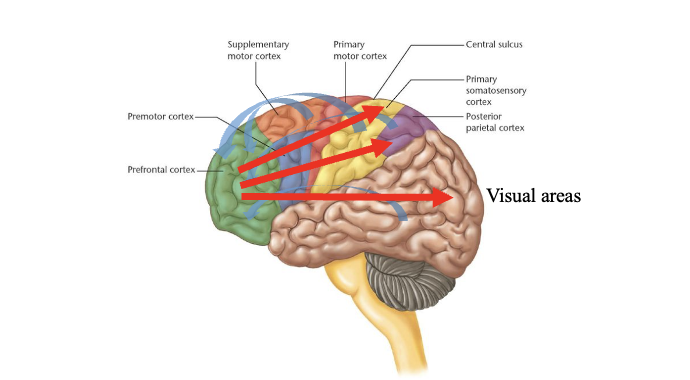lecture 23 - decision making II: executive function
1/18
There's no tags or description
Looks like no tags are added yet.
Name | Mastery | Learn | Test | Matching | Spaced |
|---|
No study sessions yet.
19 Terms

prefrontal cortex
not a motor area
involved in aspects of sensation, attention, covert decision making
influences motor circuits to output movements that are related to particular goals
interacts with BG circuits

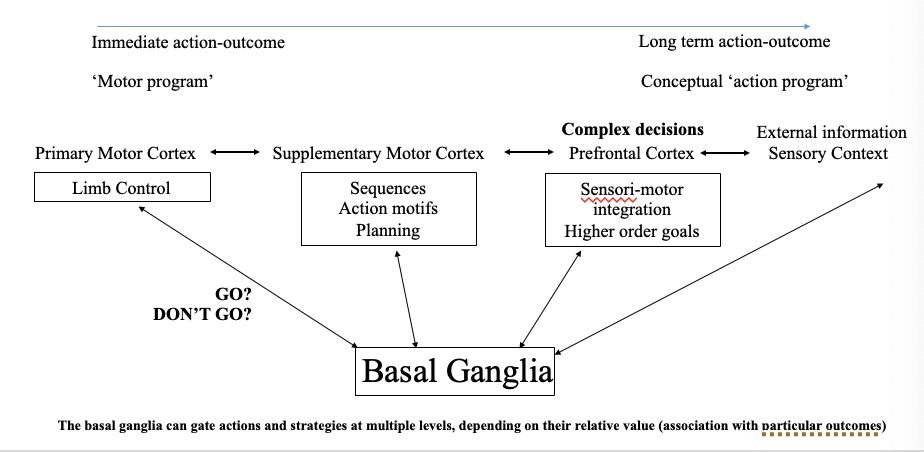
hierarchy of action representations
bottom → top
primary motor cortex: controlling limb movements, not individual muscles, but individual directions of limb movement
supplementary motor cortex: sequences, action motifs, planning
prefrontal cortex: sensori-motor integration, processing/establishing higher order goals + complex decisions
sensory context plays a role, what you’re experiencing in your environment feeds into systems to influence which actions are generated
these goals/predicted outcomes that we motivate actions based upon exist along different time scales (motor program = immediate action-outcome; conceptual “action program” = long term action-outcome)
BG interacts with all of these systems, serving as a gate, determining which of these programs at diff levels of the hierarchy are enacted/suppressed (whether its worth it)
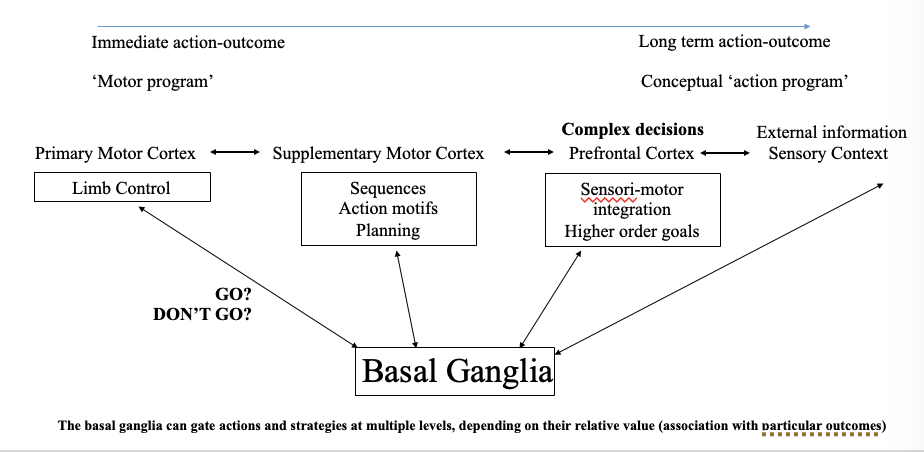

elaboration of PFC in humans
one of the regions of the brain that we think makes us uniquely human
prefrontal cortex in humans is much larger + more developed
using animal models to study brain processes is hard here b/c the PFC of humans is different than PFCs in other species
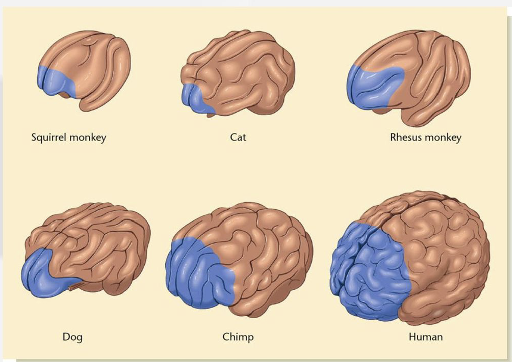

damage to PFC results in loss of behavioral inhibition
phineas gage case
damage to areas of the frontal lobe resulting from accident working on railroad
significant (but transient) changes in aggression and behavioral inhibition
personality changed significantly overtime, started to exhibit increasing aggression, social behavior changed, developed deficits in decision making
but still could function in society to some extent
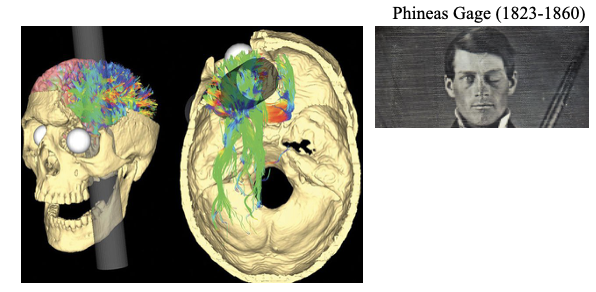
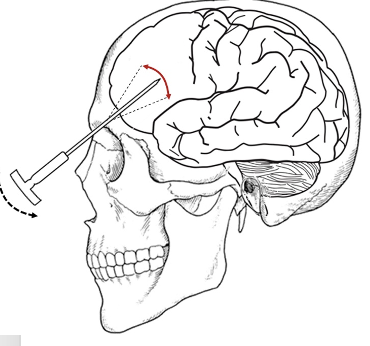
frontal lobe lobotomies
antonio egas moniz
destruction of the frontal lobe was a surgical procedure in the 40s & 50s to treat a variety of “unidentified” mental conditions like schizo
surgeries resulted in a wide range of highly variable effects:
increased passivity (but sometimes increased aggression)
loss of goal-directed motivation
loss of higher reasoning
increased impulsitivity
social impairments
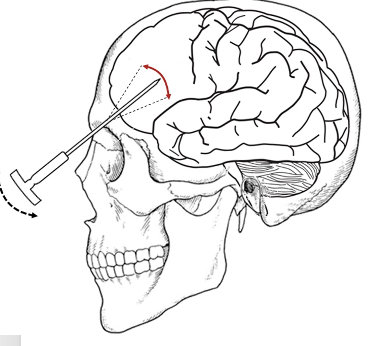
executive functions
flexibility
behavioral inhibition (suppressing impulsivity)
abstract thought (complex rules)
working memory
attention
goal-directed behavior (costs vs. benefits)
social behavior
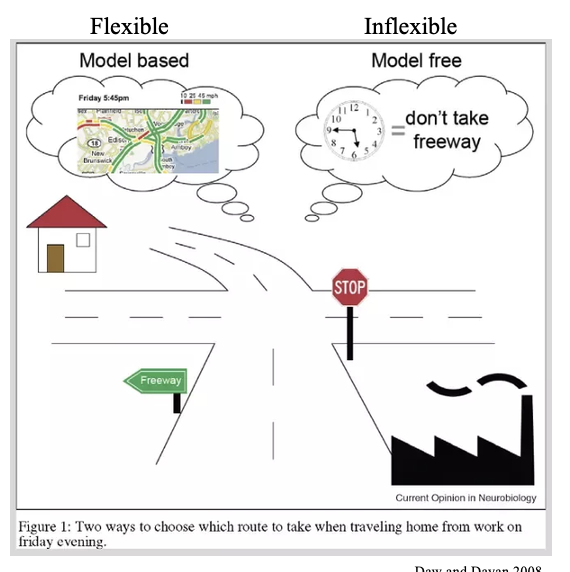
behavioral flexibility
PFC is involved in creating mental models that allow for flexible adjustments in behavior
Model based/flexible: mental map of possible actions, plan best route (may be trajectory never actually experienced); allows for adjustments based on changes in context (ex: traffic)
Model free/inflexible: learn value of simple actions based on experience (go right to avoid freeway)
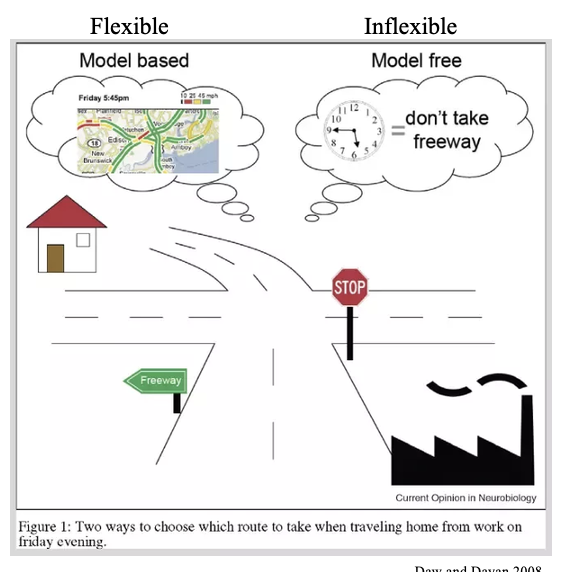
behavioral inhibition
suppressing an inappropriate/automatic response
ex: social norms (cake); habit suppression
lack of this: myelination + synaptogenesis/pruning stabilize last in the PFC, which develops last

multiple systems compete for behavior control
prefrontal cortex: context-dependent, complex/multi-dimensional, long-term goals
hypothalamus: context-independent, simple low dimensional, short term needs
multiple paths to action!
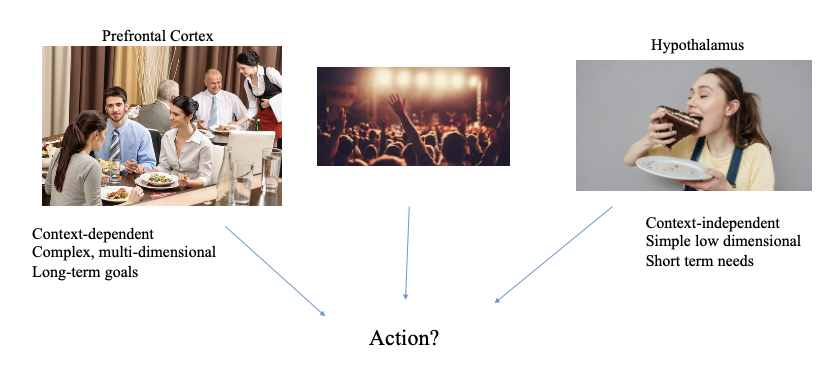
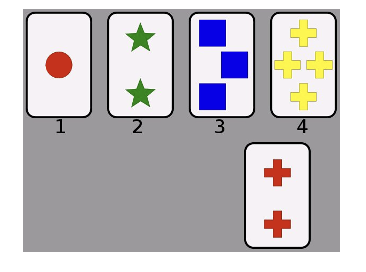
wisconsin card sorting task
task to assess behavioral flexibility and rule learning
subjects have to learn to apply a rule to match the sample card with one of the 4 others
after learning is achieved, the rule is switched and subjects have to learn to flexibly alter their choices
patients with frontal lobe damage/disorders like schizophrenia are impaired in flexibly adjusting to new rule (perseverate!)
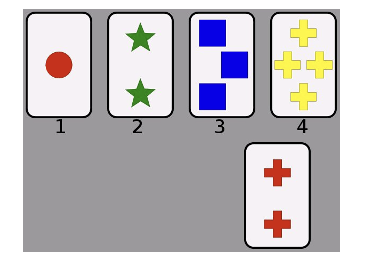
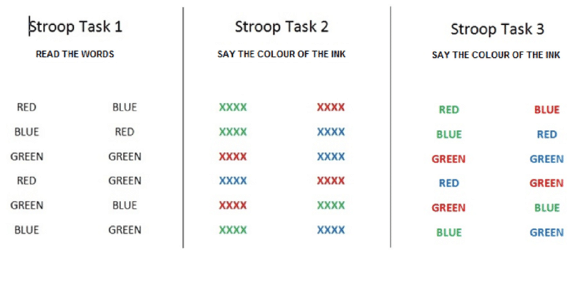
stroop task
task to assess flexibility and behavioral inhibition
conflict between rapid automatic response to read word and rule to read color
requires active suppression of rapid response in favor of slower response
performance impaired in schizophrenia, ADHD, depression, addictive disorders
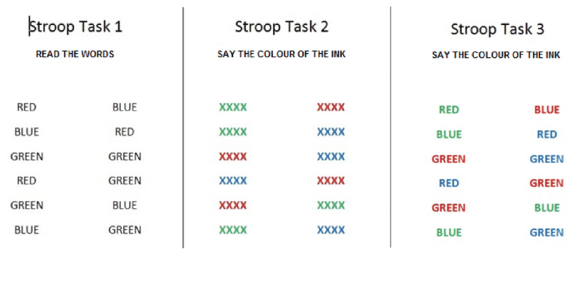
abstract thought
humans can apply complex rules to solve problems
exhibit creativity
PFC neurons can selectively represent complex rules
working memory
ability to hold something in mind over a period of time until an appropriate response can be made; holding info “online” in the face of distractors
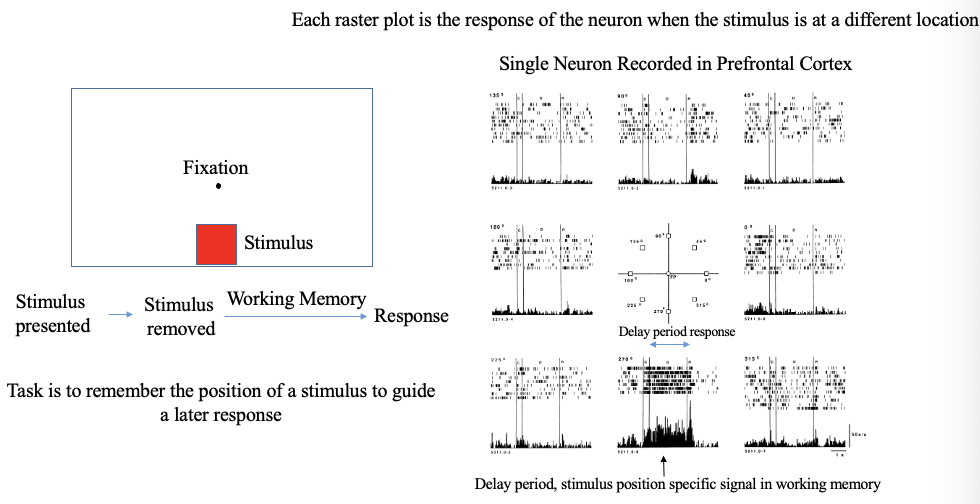
working memory in PFC
fixated in the center
stimulus is presented at a certain location on the screen
stimulus is then removed, monkey has to remember where the stimulus was presented (working memory of the location)
after some delay, the monkey can make a response
task is to remember the position of a stimulus to guide a later response
raster plot shows that neuron responds most when stimulus is shown at bottom middle; single neuron recorded in PFC
delay period response: activated when stimulus comes on, neuron continues to fire after stimulus is turned off
burst of firing shows working memory of that stimulus
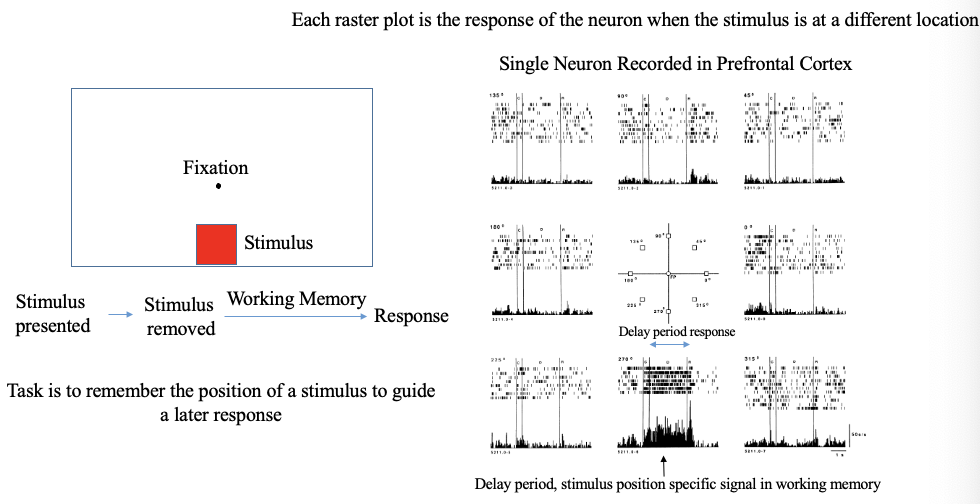
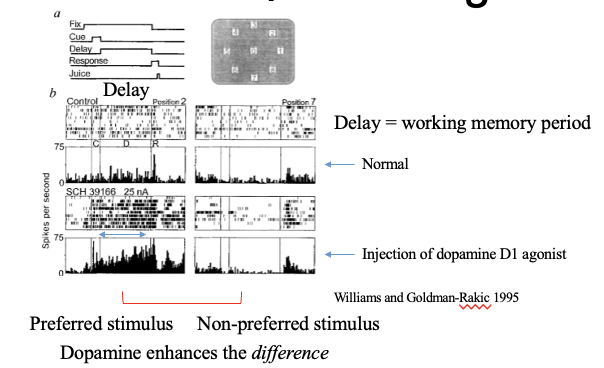
dopamine agonists can enhance working memory encoding in PFC neurons
same task where an animal has to observe where the stimulus is presented at different locations on the screen, hold that location in working memory, and create a response
response of the same neuron when a preferred stimulus is presented (left) and nonpreferred (right); preferred = receptive field
increases firing during delay period in the preferred stimulus and less so for nonpreferred
what happens if you inject a drug that enhances signaling of the d1 receptor (agonist) into the PFC?
neuron increases firing when the stimulus is in its preferred location + decreases in nonpreferred location
dopamine, the d1 binding to the receptors, is enhancing the signal (working memory response when stimulus is in preferred location) to noise (response in nonpreferred location)
drugs that enhance dopamine = enhance working memory function through G-Protein coupled receptors
too much DA can cause working memory effect to break down
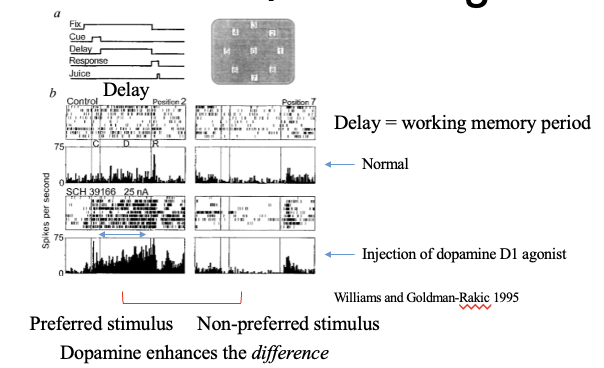
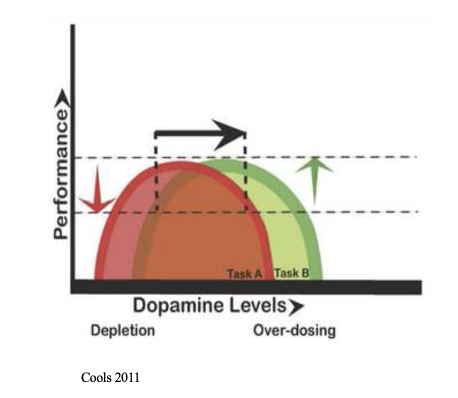
inverted U effects of dopamine on cognitive performance
drugs that enhance DA function have inverted U relationship with cog performance enhancement
effect depends on basal levels of DA and is task dependent
subjects/tasks with high basal DA will experience cognitive/working memory deficits with DA drugs, vice versa for low DA
implications for pharmacological treatment of ADHD and other disorders
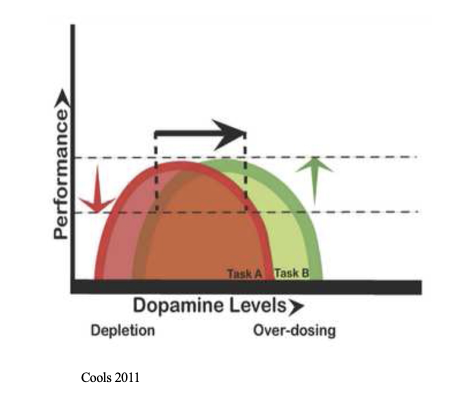
selective attention
PFC has been implicated in the ability to attend to things (attention)
working memory is connected to selective attention!
attention is drawn towards the goal, you’re able to filter out and not react to all the other stuff around you
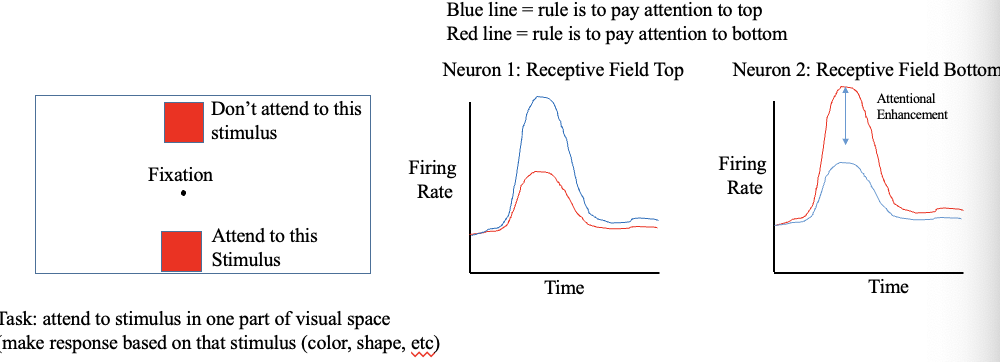
attentional modulation
task is to attend to stimulus in one part of visual space + ignore the other one (make response based on that stimulus based on color, shape, etc.)
when the rule is to attend to bottom stimulus, there is an increase in responding of that neuron for the stimulus presented in receptive field
enhancement of the response of that neuron based on the rule = attentional effect
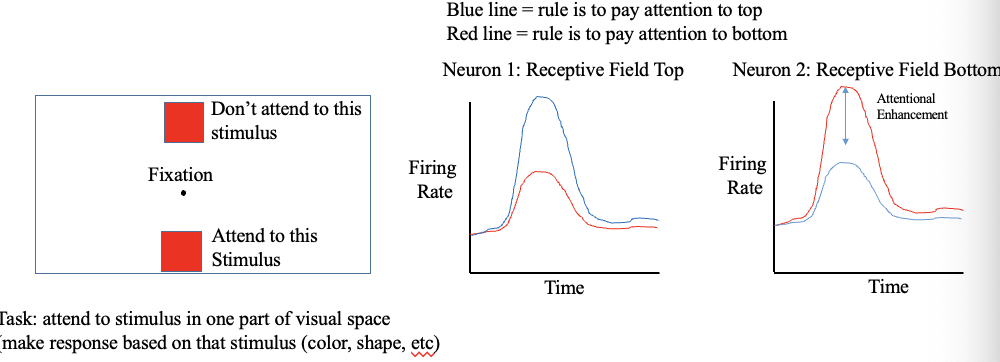
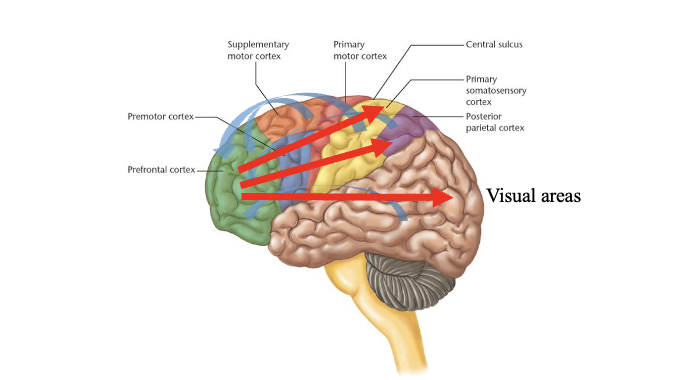
top down modulation of attention by PFC
other parts of the brain are processing the visual stimuli (v1 receiving info about the basic properties of stimuli, where they are in space)
PFC is providing this signal that’s saying which of those locations we need to pay attention to (attentional modulation)
sends connections down the hierarchy/low levels of the sensory + motor systems & can influence responses at those levels/regulate context dependent attention
PFC is master switch saying to all of these low-level systems that theres bars here, colors there, shapes, etc and to hone in on that, pay attention to those!
